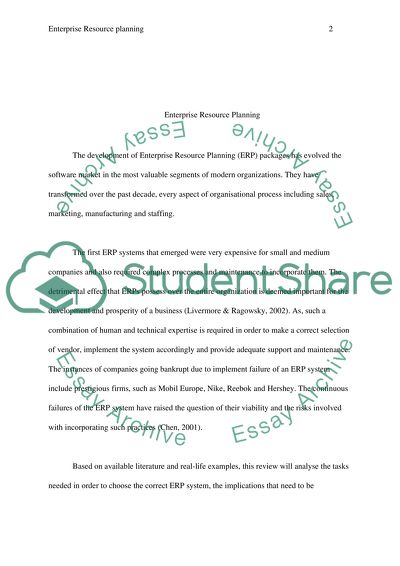Cite this document
(“Enterprise resource planning Literature review Example | Topics and Well Written Essays - 3000 words”, n.d.)
Enterprise resource planning Literature review Example | Topics and Well Written Essays - 3000 words. Retrieved from https://studentshare.org/information-technology/1403232-enterprise-resource-planning
Enterprise resource planning Literature review Example | Topics and Well Written Essays - 3000 words. Retrieved from https://studentshare.org/information-technology/1403232-enterprise-resource-planning
(Enterprise Resource Planning Literature Review Example | Topics and Well Written Essays - 3000 Words)
Enterprise Resource Planning Literature Review Example | Topics and Well Written Essays - 3000 Words. https://studentshare.org/information-technology/1403232-enterprise-resource-planning.
Enterprise Resource Planning Literature Review Example | Topics and Well Written Essays - 3000 Words. https://studentshare.org/information-technology/1403232-enterprise-resource-planning.
“Enterprise Resource Planning Literature Review Example | Topics and Well Written Essays - 3000 Words”, n.d. https://studentshare.org/information-technology/1403232-enterprise-resource-planning.


